An Overview of Patent Drawings
Patent Drawings of Illustrations are a vital factor in the Patent application for a good understanding of the invention by any ordinary people. Patent Law also mandates the necessity for drawing or illustrations in an application for Patent Registration, which makes it beneficial to influence the examiner and to accelerate the overall process. To understand the real value of quality Patent Drawings, it is vital to know that it's a difficult process.
There are two primary objectives:
- You have to distinguish it from the already known or registered inventions, which are referred to as Prior Art. The invention has to be unique & non-obvious in this viewpoint;
- To ensure that it complies with some predefined standards set out by the Patent Office.
The Patent Drawings are usually used to correspond to Patent Claims themselves as per the Patent Drawing Rules. High-quality Patent Drawings or Illustrations also allows you to capture the differences and uniqueness of the invention very clearly & easily. It can also aid you to meet the support requirements more effectively. Hence, such drawings are in a predictable part of any Patent.
Different Types of Patent Drawings
The Patent Drawings comprise both Utility Patents & Design Patents Illustrations. The drawings may be needed by the law to be in a specific form, and the necessities may vary depending on the jurisdiction. Patent Drawing works as a visual material supporting the invention. Relying on the Patent invention, it can use chemicals, graphs, tables, symbols, mathematical formulas, and waves of electrical signals.
Following are the different types of Patent Drawings:
- Mechanical;
- Drawing-graph;
- Sectional Views;
- Electronic;
- Schematics & flowchart;
- Drawing-exploded;
- Perspective views;
- Utility
What are the Requirements for Patent Drawings or Illustrations?
For filing a Patent application in India, where description by drawings is required to support the invention, such drawings must be prepared as per the Provisions of Rule 15, provided that in the case of an entire specification, if the candidate wants to do so with drawings submitted to its provisional specifications as drawings/parts of the drawings for the complete specifications, it be sufficient to mention them in the full specification as those on the provisional specification.
Rule 15 of the Indian Patent Act & Rules 1970, as altered in 2005, provides the following requirements for Patent Drawings submitting along with a requirement to demonstrate an invention:
- The Patent Drawings must include the specifications to which they refer;
- At least a single copy of the multiple copies of the drawings (if submitted) should be made neat & orderly on durable paper;
- It should be of enough scale to portray the inventions, and its dimensions should not be marked on the drawing itself;
- They should be drawn on an A4 sheet of paper with a free margin of a minimum 4 cm at the top & left and 3cm at the right & bottom of each sheet;
- There should be no vivid matter in the sheet on which drawing is made except for flow diagrams if required;
- They should be numbered systematically and must bear the applicant’s name, signature and the consecutive sheet number or, if done by their legal representative, their signature.
Now coming to the drawing for Design Patents, they are covered under the Design Rules, 2001 & Design Act, 2000. Industrial Design, which is also recognised as Patent Design, is safeguarded under the Design Act. It mentions the creative activity which results in the formal/ornamental appearance of a product. The specifications for compliance are provided under Rule 14 of the Design Rules.
Rule 14 provides the following requirements:
- 4 copies to be submitted as per Rule 11 must resemble the sample & be drawn on strong A4 paper and only on one side of each sheet;
- If multiple figures are revealed on the same sheet, each of which must be designated after an outlook, a front view or side view;
- Each representative includes a repeating pattern, and it must show the repeating pattern; however, the size shouldn't be less than 5 x 4 inches or 13 cm x 10 cm in length and width, respectively;
- If the number, words, or letters are not the essence of the design, they must be removed, and if required, a disclaimer must be given to claim the right to their exclusive use;
- If anyone's name is shown on the design, that person's approval must also be provided. In the matter of the deceased, the permission of the legal representative must be presented.
Compliance requirements or necessities vary from jurisdiction to jurisdiction, but in general, it relates to the paper size, layout, numbering, font size, margins, and labelling. Lines used in drawings must adhere to a particular style and thickness, along with the level & type of shading. The Drawing for Patent should be made in such a manner that an individual from the respective field can understand it easily. The drawing should include the level of information necessary to enable further the claim of application and to prevent itself from future prosecution. For this, it should include disclosure concerning the complete or a specific part that might be described in minute detail.
Patent Drawing Applications that were rejected
- vs Avia Group Int’l: In this case, the drawing was rejected because the disclosure was silent on the question of the precise prepositions of the creation. It is well-established that Patent Drawings do not classify the precise proportions of the elements & may not be depended on to show particular sizes if the specifications are totally silent on the matter.
- Leviton vs Jockmus: In this case, drawings or illustrations may be enough enabling to put the public in possession of the article pictured. Hence, such an enabling picture may be used to refuse claims to the article on the basis of the Prior Art. However, the picture must illustrate all the claimed structure features and how they are put together.
Following are some common rejections by PCT or USPTO:
- Sheet Margin Rejection: A very ordinary rejection, it is applied when the drawing is out of margin.
- Text Height: According to PTO guidelines, the height of the letters shouldn't be less than 0.32 cm.
- Gray Scale Drawings: If a drawing can be shown with lines, then the PTO will object to the Gray Scale Drawings. So it’s better to create the line art form of the drawings.
After the above discussion, it is vital to know that non-compliance with standards and the lack of knowledge & skills required to create Patent Drawings or Illustrations can result in objections being filed during the examination of the Patent application, resulting in increased time & costs for the Patent application.
What are the challenges or difficulties involved in Patent Drawings or Illustrations?
- Inconsistencies: The inconsistency between the drawing and the claim, which in many cases lead to rejection. Spanx Inc. vs Times Three Clothier, in this matter, the US court rejected 2 out of 3 patented claims because it observed fatal discrepancies.
- Technical Nature: Since Patent Drawings are technical, if they lack the technical accuracy & tools required for quality illustrations, it may lead to rejection of the application completely, where the drawing is compulsory to help the claim of uniqueness & non-obviousness. It must be remembered that it's not the quality of tools that are vital but the quality of illustration. Also, the Patent Office requires a very specific illustration; if it has not complied with, it might be refused.
- Cost: Experts are required to have knowledge of various jurisdictions & their specifications like EPC, CNIPA, and US. Also, they have access to helpful tools like ChemDraw (chemical drawings), Visio (drawing flowcharts), and AutoCAD. This might lead to the solo inventor spending a chance on these drawings and, if refused, discourages him from applying again.
- Data as Drawings: This is for biological & chemical experiments conducted and where the printouts of lab reports are submitted as per the Patent Office data. The requirements for drawing as per Rule 15 of the Patent Rules specify that it has to be on A4 size paper and is preferred in black ink. It poses all kinds of a problem because data requires colour coding, and it would be possible to depict only a graph in black & white; and if colour is to be used, then it requires a correct explanation on the failure of which the application shall be rejected.
Frequently Asked Questions
These drawings are graphical representations that are attached to a Patent application to explain an invention properly. These can also be regarded as a secondary language that reveals the real picture of an invention.
To draw Patent Illustrations, it is vital to be aware of elements that need to be comprised in Patent Drawings. Similarly, drawings should be created in a way acceptable to the USPTO. While an applicant can draw black & white drawings using a ruler & pen or you can use computer drawing software to produce a drawing.
According to the Patent Laws, a Patent candidate must provide a minimum of one Patent Drawing of the invention.
Such drawings are a vital component of a Patent application. Applicants need to provide a Patent Drawing of an invention whenever a drawing can help in understanding the invention.
Some popular paid software packages for Patent Drawings are Adobe Illustrator, Draftsight, CorelDraw, and Adobe Illustrator for MAC. While FreeCAD, SketchUp, LibreOffice Draw, Inkscape are some free software for Patent Drawings.
These drawings can be searched in the USPTO Patent Full Text and Image Database (PatFT).
Everything in a published Patent or application is assumed to be in the public domain unless accompanied explicitly by the Copyright Notice.
It is legal to sell copies of present published Patents too.
The drawing must have a valid title that tells the drawing's purpose clearly, and it must have the inventor's name, application or docket number (if provided) on the front of each sheet & centred within the top margin.
Colour drawings are acceptable in US Patent applications, but it is not accepted in international applications.


